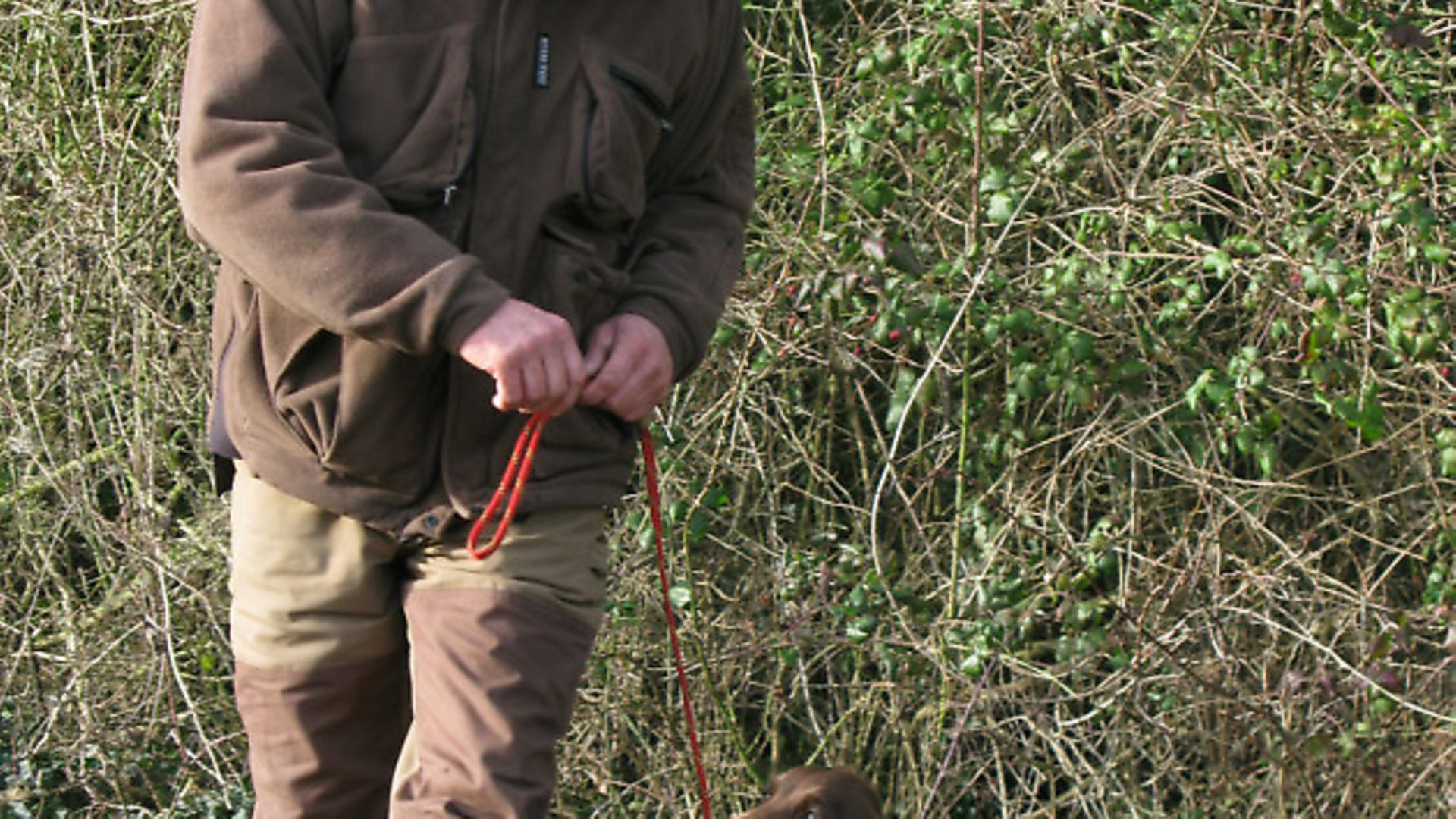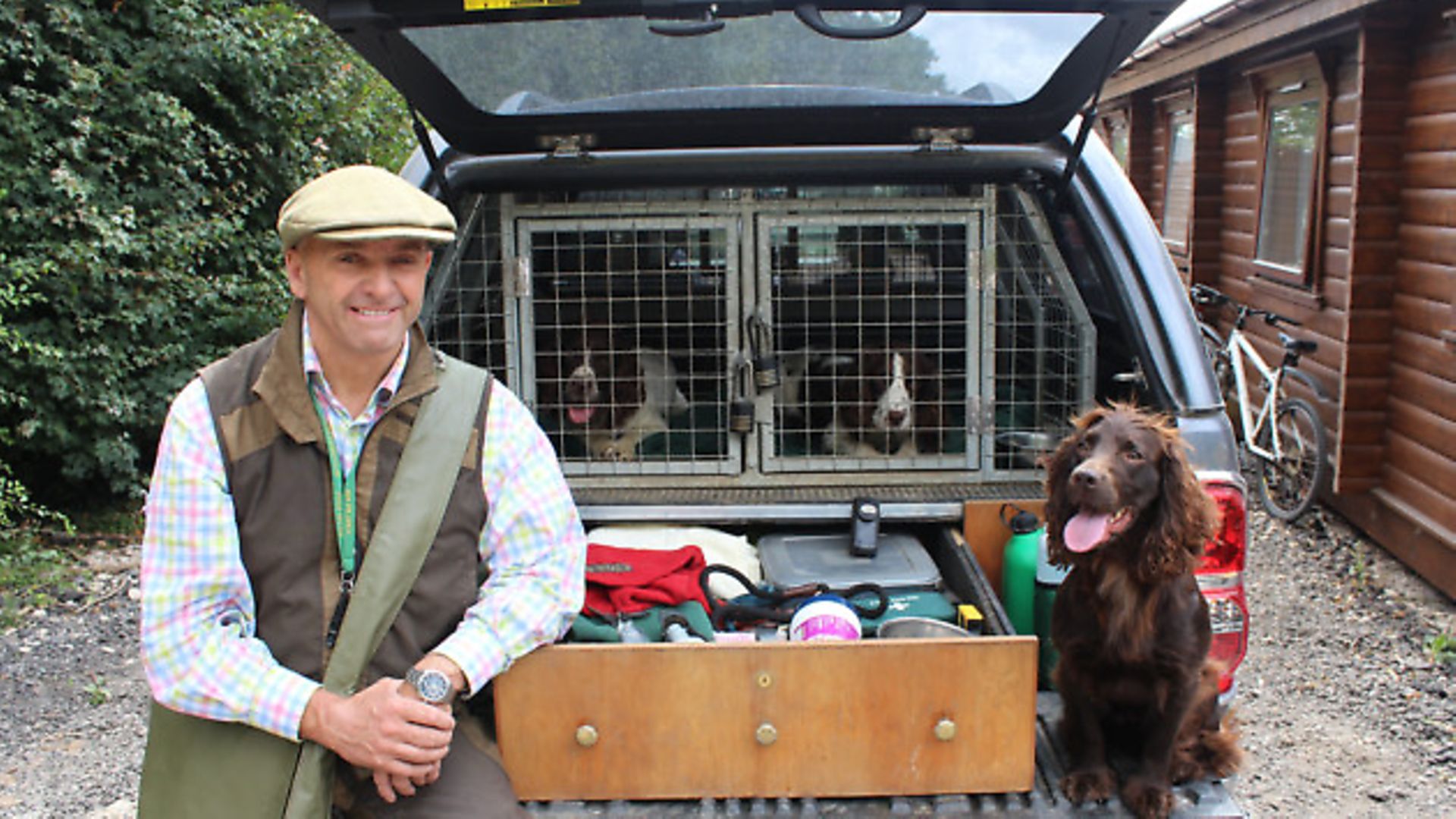Howard’s guide on what to brush up on with your gundog before venturing out into the field
 credit: Archant
credit: Archant
1. Make sure the dog walks nicely to heel on or, ideally, off-lead. We don’t need high level obedience stuff, just that the dog walks on a loose lead. Refresh the dog’s understanding of this, practise heelwork, circles, sharp turns, pace changes, and stops and starts. Teach the dog that he is to follow you, not the other way around.
2. Steadiness is so important. We can make a dog steady by keeping him on a lead; there are some fantastic picking-up dogs that need to be on a lead whilst shooting is taking place. There is absolutely nothing wrong with this at all, but life is better for the dog and the handler if he’s taught that he mustn’t put tension or pull on the lead. Picking-up dogs need to understand that not every bird that hits the ground is for them. Once they’ve got this they’ll sit quietly alongside you waiting to be taken off the lead and told to ‘get down to business’. During training sessions, build steadiness by ensuring that you don’t send your dog for every dummy you throw. With a young dog in the shooting field, resist the temptation to send him on runners – use a more experienced dog for these.
3. A reliable recall is a must. Irrespective of how good your dog’s recall is on the training field, once you get the dog out into live game he will find more gears than you can ever imagine. This is where the rabbit or bird pen comes into its own. If you ensure your dog responds to all the basic whistle and voice commands in this exciting and distraction-filled enviornment you will be closer to achieving recall in the shooting field.
4. There is a big transition to make in moving from dummies to game and opportunities for this are not easy to find. Contact your local gundog training club or professional trainer – they will be able to get you involved with gundog training days on live game. Where these are well run it’s a priceless opportunity and one not to be left out of your training plan.
 credit: Archant
credit: Archant
5. Make sure that all the kit you need is ready and close to hand or, even better, neatly packed into the back of the shooting vehicle. Ideally you would have a reliable 4x4 vehicle, fitted out to securely transport the dogs, all your kit and a friend.
6. A good quality game bag or game carrier will be really useful. There are all sorts to choose from and you will need to consider how much game you need to carry – this will be dependant on whether you will be working on a small rough shoot or a much bigger commercial day. Game carriers are brilliant for moving game from the covers to the game cart. A good game bag can also be used to carry all of your kit, but you do need to leave enough room for the game. Freshly shot game will soon heat up and start to deteriorate when stored in a bag, so make sure that you get the game stored and hung correctly as soon as possible. Don’t leave game in the back of your vehicle with the dogs, it won’t take a youngster long to work out that this is the best meal ever and a gundog that learns to eat game is not good.
7. A good quality multi-tool that has a sharp blade, scissors, pliers and wire cutters is every countryman’s best friend, but almost an essential for dog handlers. I have seen several dogs get caught in discarded wire or a dog’s trailing leg get trapped in a fence, both of which need immediate rescue and being prepared for this is a must.
8. Drinking water for the dogs is easy to overlook. In the depths of winter water troughs, streams and disgusting puddles are usually the dog’s first choice for a cool drink, but if you’re out on the moors or the stubbles in August and September water can become a precious resource. Ensure you have a can of clean, fresh water in the vehicle. You can easily carry a fold-out water dispenser for dogs in the field, too.
9. A first aid kit for dogs and humans and, of course, the knowledge of how to use one is essential. Vicky Payne, Sporting Shooter’s very own gundog handler, trialler and expert veterinarian, is the one to advise you on this.
10. Ensuring that your dog, the kit you will need and yourself are ready for a full day in the shooting field takes a surprising amount of thought and effort. Education is the key to this, some of which – good manners, etiquette, sportsmanship, punctuality and obedience – you will have learnt from your years at school (assuming you went). The rest you will need to learn by watching, listening to and being around people that ‘do’ – people that really know their stuff.
Well go on then, don’t sit around thinking about it, get on and let’s get ready to rumble.